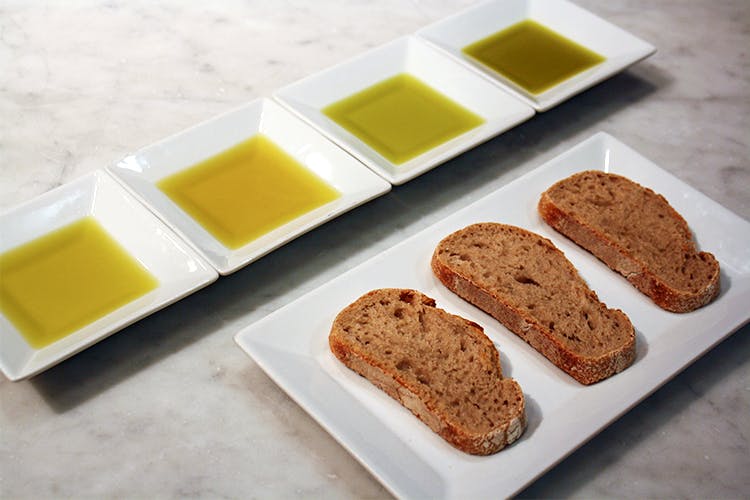Stage an olive oil tasting as a prelude to your next dinner party: we promise you will pique both appetites and curiosity (and get the evening started with a peppery kick!). Olive oil tasting is similar to wine tasting: just like wines, olive oils have a very wide variety of tastes and aromas. A tasting can both sharpen your palate and allow you to identify what kind of oil you prefer.
The three basic categories to consider when tasting olive oil are delicate, medium, and intense. To really impress your fellow tasters, we suggest throwing out terms like fruity, pungent, bitter, herbaceous, buttery, grassy, peppery, and so on.
Choose at least three and no more than five oils to taste to maintain balance (and keep the activity fresh!). Now, you're ready to taste!












